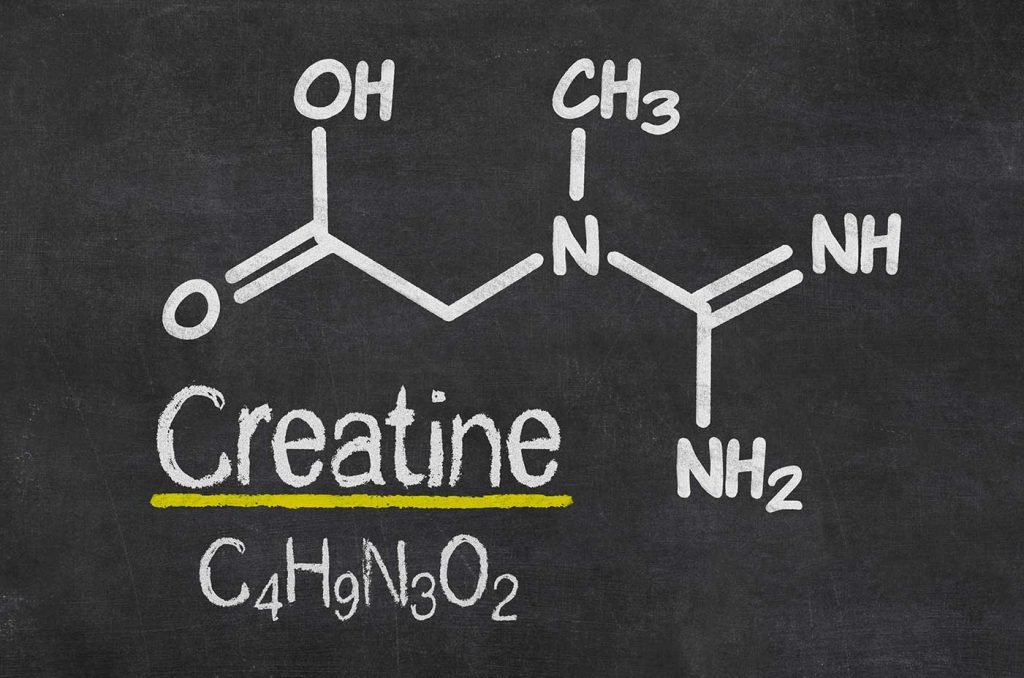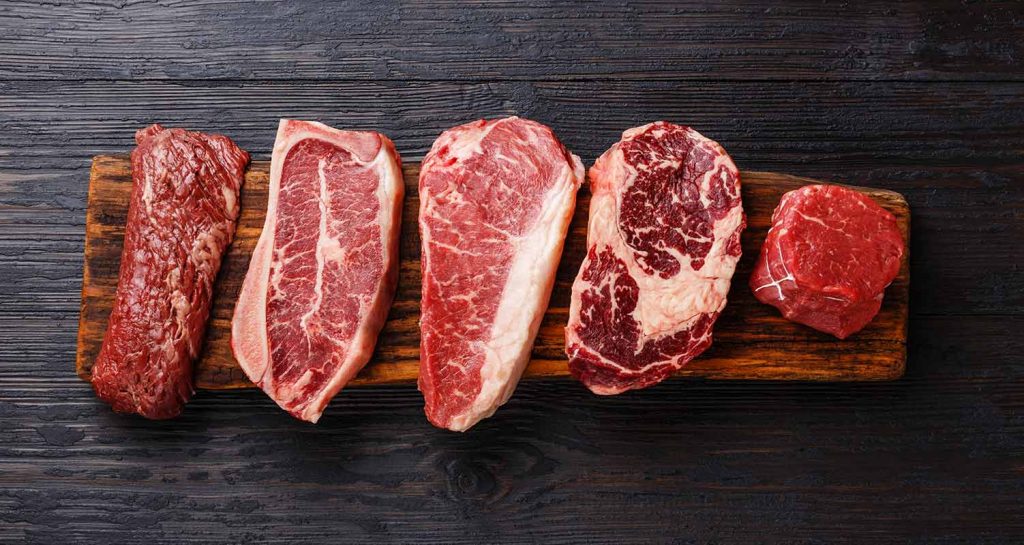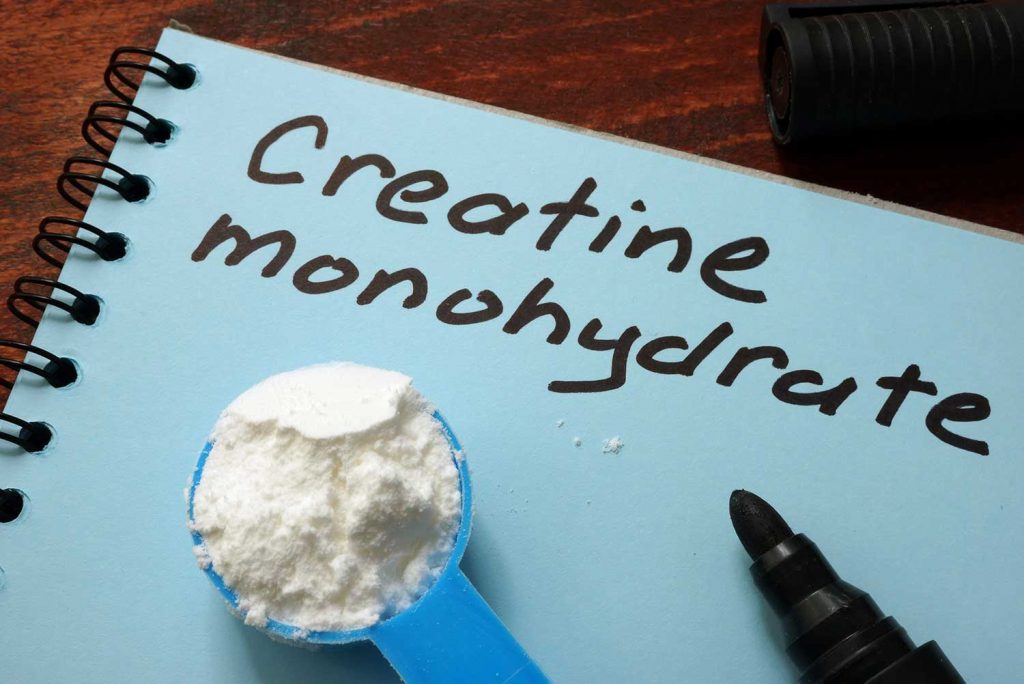What is the effect of creatine – and what are the side effects? Does taking creatine help build muscle – and how useful is it when losing weight? Creatine monohydrate is one of the best researched supplements ever. You will learn all about it in this article.
Unlike many other dietary supplements, creatine can really give your muscle cells superpowers. Would you like an example?
Weightlifters who take creatine perform 14% more.
On average. Fourteen percent are worlds in competitive sport.
Is that why creatine is automatically a “must” for everyone? Not necessarily. It depends on where you stand, what your goal is and, above all, whether you use it correctly.
Anyone who wants to buy creatine will probably be surprised at the enormous price differences.
Some products cost more than ten times as much.
An expensive product is not necessarily better.
It is best to take the time, because at the end of this text you will know everything you need to know about creatine.
What is creatine?

“Creatine” comes from “creas”. This is Greek and means meat.
Creatine is an amino acid, which in turn is composed of three amino acids:
Creatine is non-essential. That means:
Your body can produce creatine itself.
At least to a limited extent. This happens in the kidneys, liver and pancreas.
As long as you eat enough protein, your body produces 1-2 grams of creatine per day.
You can also absorb creatine directly from natural protein sources – especially red meat – and dietary supplements.
You store creatine mainly in the muscles. In addition, the heart, brain and (if present) the testes store creatine.
Why does your body bother to produce and store this substance?
KEY FACTS: What is creatine?
Creatine is an amino acid that your body – to a limited extent – can produce yourself. The largest stores of creatine are in the muscles.
What is the point of creatine?

Let’s assume you are doing pull-ups or doing a short HIIT sprint .
Creatine ensures that you can give full throttle a few seconds longer.
Of course only while there is still creatine in storage.
Why is that?
You have a fascinating mechanism in your body, the so-called “phosphagen system”.
The phosphagen system provides the muscles with the energy they need for short, but intense loads.
We’re talking about 10 seconds and less.
The phosphage system is able to replenish used adenine triphosphate (ATP) quickly.
ATP is the only fuel that your muscles can use.
The muscles always have a reserve of ATP ready, but only very little. This reservoir is exhausted after a few seconds.
This is how the phosphagen system works
- The muscle fuel ATP consists of three phosphates (therefore adenosine- tri -phosphate).
- Only when you castrate ATP – namely by splitting off one of the three phosphates – is stored energy released. Energy that your muscles can use.
- What remains is a molecule made up of two phosphates (adenosine Di phosphate, ADP).
- To get out of the castrated ADP To produce more potent ATP, the muscle cell needs phosphate – namely pronto!
- Creatine, more precisely Creatine phosphate, takes over this energy infusion: It sacrifices its phosphate so that ADP becomes ATP again and you reach the goal in the sprint.
In a competition, the creatine supply can tip the scales.
Studies show that 100-meter sprinters who supplement creatine can give full throttle about 2 seconds longer. 2
Creatine is therefore a critical factor when it comes to quickly supplying the muscles with energy under stress. Put simply, this means:
More creatine → more ATP → more performance with short, intense exercise
A good two thirds of the creatine in your muscles is bound to phosphate (creatine phosphate). The remaining third is unbound (free creatine).
If you tense a muscle to the maximum, the ATP reserves are used up within seconds. With well-filled creatine stores you can clearly achieve such high performance – but still stay within seconds.
With longer loads (minutes and longer) you have to reduce the load intensity. Then your body switches to a different type of energy supply in which creatine no longer plays a role. That means:
Creatine gives you extra power in strength training and sprints – but not in marathons.
When your muscle stores creatine, it also draws more water. This makes the muscle appear plumper and more defined.
In the long term, a good creatine supply also has a positive effect on other elements of muscle metabolism: 3 4
- Creatine promotes protein synthesis: You can build muscles faster and regenerate faster.
- Your muscles can store more glycogen: Carbohydrates, that land in the muscle provide energy for maximum stress.
Large glycogen stores are practical for anyone who wants to stay slim. Because they allow you to eat more carbohydrates without putting on fat:
Carbohydrates stored in the muscle can no longer be converted into fat.
Creatine is one of the best-studied nutritional supplements of all. In the next section you will get to know the most important findings at a glance.
KEY FACTS: What does creatine do?
Creatine takes care of it that your muscles can perform at their best for longer. Up to a certain limit, the following applies: More creatine leads to more performance in high-intensity sprints and strength training.
Creatine also stimulates muscle protein synthesis and supports regeneration and muscle building.
Creatine effects: 7 scientific facts that you should know

Creatine is predominantly used as a dietary supplement Taken in the form of creatine monohydrate.
Most studies were carried out with creatine monohydrate.
Here is an overview of the most important study results on creatine effects:
- Creatine increases performance in weight training . A meta-study found that creatine supplementation increased weightlifting performance by 14% (versus placebo) – a dramatic improvement. The endurance performance also seems to increase somewhat as long as it is an intensive, anaerobic exercise (e.g. sprint). The effect is, however, nowhere near as great as in weight training. 5 6 Depending on the training goal this can indirectly promote muscle building (through higher training stimulus) or fat burning (through increased calorie consumption).
- Creatine works not performance-enhancing on aerobic endurance performance , such as in triathlon or long-distance runs. 10 However, the slightly higher body weight with full creatine stores does not affect endurance performance.
Note : Endurance athletes still benefit indirectly from taking creatine. Because creatine stimulates protein synthesis in muscles, they can regenerate more quickly.
- Creatine binds water Your weight increases, muscles become firmer. In men, the lean body weight increases by an average of 1 kg within 7 days. This effect is mainly due to water retention in the muscles.
- Taking creatine promotes muscle building and regeneration . In several studies an increase in protein synthesis in the muscle observed with continuous creatine intake.
- The creatine effect seems to go beyond athletic performance . Taking creatine could protect against nervous diseases such as Parkinson’s, Huntington’s disease and ALS.
- In vegetarians and vegans, creatine intake seems to increase mental performance. Scientists attribute this to the fact that Vegetarians / vegans normally do not ingest creatine through food and therefore store less creatine in relative terms. This effect was not seen in people who also ate meat. 22 In another study it was observed that creatine intake decreases after switching to a meat-free diet.
- A diet supplement with creatine has no effect on approx. 20 percent of all people. If you belong to this group of “ Should belong to non-responders ”, that’s not a bad thing: You are probably already supplied with creatine so well through your diet that you can simply save yourself a dietary supplement. People with better trained muscles and a higher percentage of type 2 muscle fiber (“sprinter type”) seem to benefit more from creatine supplements.
Even more facts? If you are looking for further scientific studies, background information and results, you will find an excellent overview of the current state of research in the Supplement Goals Reference Guide . The colleagues at Examine.com have analyzed and processed over 700 studies on creatine effects alone.
KEY FACTS: 7 scientific facts about creatine effects
Creatine is one of the best-researched dietary supplements. A significant performance-enhancing effect in strength training was observed in many studies. The anaerobic endurance performance (sprints, etc.) also seems to have a positive effect on creatine, but to a much lesser extent.
Taking creatine means that more water is stored in the muscles. The body weight can increase by 1 to 2 kilos.
The performance-enhancing effects were not observed in endurance sports, but the weight gain caused by creatine does not seem to impair performance.
Creatine is associated with a number of positive effects that go beyond athletic performance. Apparently it promotes the nervous system and cognitive abilities.
Creatine side effects & risks: How safe is it to take creatine?

Creatine is a generally well-tolerated and safe dietary supplement.
So far, no clinically relevant side effects that can be attributed to creatine intake have been found in healthy people.
If side effects are noted, it is either digestive problems – if the dosage is very high – or stomach cramps if too little water is drunk. 28 29 30
It is sometimes said that creatine is bad for the kidneys or increases the risk of cancer. Is there anything to it?
- Is creatine harmful to the kidneys? No, at least not if your kidneys are healthy. Even with impaired kidney function problems are very unlikely, but if your kidney function is impaired, you should consult a doctor first to be on the safe side.
- Does creatine increase the risk of cancer? No, there have been no studies to date that link creatine to cancer. However, there are several studies that show that creatine protects the genetic material from oxidative damage.
KEY FACTS: Creatine side effects & risks
Creatine is a generally well tolerated and safe dietary supplement. No clinically relevant side effects that can be traced back to creatine intake have been found in healthy people.
Creatine intake: the right and the wrong way

The positive effect is in most studies with a Observed creatine intake of about 3-5 grams per day.
If you have not yet supplemented creatine, you should start a one-week loading phase before you go on a maintenance dose :
- Loading phase: Take 20-25 g (or 0.3 g per kg of body weight) creatine daily for 5-7 days.
- Maintenance phase : Take 5 g daily.
Since your body stores creatine, when you take it is not important as long as you take it daily .
What should you pay attention to when taking creatine?
Here are some more “best practices” to help you get the best results:
- If you decide to use creatine, you should really take it every day.
- Use the dosages given as a guide. “More helps more” doesn’t help.
- Always take a creatine dietary supplement with a little liquid.
Do you have to perform a loading phase?
Many studies on creatine have been done with a loading phase. But not all. It is not a “must”. Studies carried out without a loading phase also showed positive effects.
A loading phase only allows you to enjoy the creatine effect faster.
If you want to forego the loading phase, you should take 5-10 g creatine a day.
Do you have to take creatine cyclically (“Creatine Cure”)?
A cyclical intake of creatine is often recommended, also known as the “creatine cure”:
loading phase → 3-4 weeks maintenance dose → 1-2 weeks break → loading phase →…
However, the 1-2 week break is not necessary. I usually recommend my clients to take creatine continuously and build a habit.
I used to take creatine cyclically and then always forgot to start again. If I take it daily, that doesn’t happen anymore.
If you have not yet supplemented creatine, you should first take 20-25 g creatine monohydrate per day with some liquid for one week (loading phase) and then the dose to 5 g per day to reduce. Since your body stores creatine, when you take it is not important as long as you take it daily .
How much creatine do natural foods contain?

The typical diet of a person who also eats meat provides around 1 gram of creatine per day.
Almost every animal cell contains creatine, with muscle cells containing a particularly large amount.
To get to 5 grams of creatine a day, you would have to eat a lot of meat. Here is an overview of meats that are particularly rich in and low in creatine.
Meat with a lot of creatine
Information per 1 kg of uncooked meat:
- Steak or ground beef (muscle meat) – approx. 4.6 g creatine
- Chicken – approx. 3.4 g creatine
- Rabbit – approx. 3.4 g creatine
- ox heart – approx. 2.5 g creatine
- pork heart – approx. 1.5 g creatine
Meat with little creatine
Information per 1 kg of uncooked meat:
- Liver – approx. 0.2 g creatine
- Kidney – approx. 0.2 g creatine
- Lung – approx. 0.2 g creatine
- Blood – less than 0.1 g creatine
For vegans and vegetarians, supplementation with vegan creatine makes sense.
KEY FACTS: Creating content of food
The typical diet of a People who also eat meat provide around 1 gram of creatine per day. To get to 5 grams of creatine a day, you would have to eat a lot of meat. Creatine is significantly cheaper as a dietary supplement. Good vegan products are now also available.
Creatine monohydrate, Creapure, Kre-Alkalin & Co. – which is best?

Creatine is one of the most popular sports nutritional supplements. The industry has also recognized this.
Accordingly, you can buy it in countless variants, at different prices. “New” creatine compounds are often marketed as even more potent and offered at a corresponding price.
It’s amazing how big the price range is:
For 1 kilo of creatine monohydrate you can – depending on the product – spend up to 250 euros. But it is also much cheaper, for 15 euros per kilo.
Is it worth the sixteen times the surcharge for the low-cost product?
These are the creatine compounds that are most commonly offered:
- Creatine Monohydrate : Most scientific studies on creatine have been done with creatine monohydrate. So it is, so to speak, the “reference creatine”. Creatine monohydrate is well absorbed through the digestive system. So far there is no evidence that other forms of creatine work better.
- Creapure (micronized creatine) is creatine monohydrate, the particle size of which is through a mechanical process has been scaled down so that it dissolves more easily in water. It is not more effective than creatine monohydrate.
- Creatine Magnesium Chelate : In small doses, creatine chelated with magnesium is on par with creatine monohydrate in terms of its effectiveness. Creatine Magnesium Chelate could be useful for those who avoid additional water retention in the muscle, but still want to enjoy the creatine-related strength gains.
- Creatine Citrate is creatine bound to citric acid. It works just as well and is absorbed just as well as creatine monohydrate. It dissolves more easily in water than monohydrate, but this property does not affect absorption in the body.
- Creatine Malate is creatine bound to malic acid. Malic acid itself could have positive properties on the organism, but its effects have not yet been researched together with creatine.
- Creatine nitrate dissolves more easily in water as creatine monohydrate. 48 In addition, it supplies nitrate, which can have a positive effect on the cardiovascular system and thus also on training. Whether creatine nitrate really combines the positive effects of creatine monohydrate and nitrate has not yet been investigated.
- Buffered creatine (“Kre-Alkalyn”) Is marketed as a more effective and even better tolerated creatine monohydrate variant. A higher pH value could lead to the creatine reaching the muscle faster and being stored more easily. Sounds good in theory, but has not yet been proven in studies.
- Creatine hydrochloride (“Con-Cret”) is a molecule in which creatine is bound to a hydrochloride salt. As a result, creatine should also be effective in a lower dose. However, there are currently no studies to support this claim.
- Creatine Ethyl Ester is less effective than creatine monohydrate. Apparently, your body breaks it down to creatinine before it can even get into the muscle. Studies suggest that it is no more effective than a placebo.
- Creatine Pyruvate According to one study, it could be absorbed better into the bloodstream than creatine monohydrate. In terms of uptake into the muscle, however, the same study showed identical results for both forms of creatine. 45 The results have not yet been confirmed by other studies.
- Liquid creatine : Studies suggest that creatine monohydrate works better than creatine fluids. 52 This has to do with the fact that the creatine in liquid breaks down to creatinine within days . 53 So it is not a problem if you dissolve creatine monohydrate yourself in shakes – you wouldn’t leave them standing for days.
KEY FACTS: Which Is Creatine Compound Most Potent?
The vast majority of scientific studies on creatine have been using creatine monohydrate carried out. Of all the variants in which you can buy creatine, it has the best price-performance ratio.
Other compounds are usually more expensive, but offer no proven advantage – apart from better solubility in water. However, this has no influence on the creatine effect.
Creatine dissolved in water should be drunk on the same day, otherwise the effect wears off. You should therefore not buy liquid creatine.
Buy creatine: which products we use (and recommend to our clients)
For absorption in the body, it makes no difference whether you take creatine as a powder, tablet or capsule. 54 capsules and tablets are only containers for the powder.
The same applies to a good creatine preparation as to a good protein powder: It is free from prohibited substances. So if it’s on the Cologne list or registered with Informed-Sport, you’re on the safe side.
Here are some products I can recommend:
- Creatine monohydrate in capsule form (approx. 50 euros per kilo , Cologne List, GMP certified): I use capsules, although they cost a little more than powder . Why? You can’t spill anything, you can easily fill something for on the go and the dosage is child’s play.
- Creatine monohydrate as powder (approx. 15 euros per kilo , Cologne list, GMP certified): Lower price, full creatine effect.
- Vegan creatine monohydrate (approx. 15 euros per kilo , Cologne list, GMP certified): This creatine monohydrate powder is also suitable for vegans.
Of course there are also other good products. You are welcome to name your favorites in the comments.
KEY FACTS: Buy the right creatine – you should know that
creatine monohydrate is the most sensible choice. GMP certification and being on the “Cologne List” of the Sport University Cologne are important quality criteria.
A powder is usually cheaper, capsules are easier to dose – the creatine effect is the same in both cases.
Conclusion
Creatine is one of the best-researched dietary supplements of all.
It is cheap, safe, well tolerated and the positive effect on athletic performance and health is – in contrast to many other “miracle drugs” – scientifically proven.
Therefore, creatine is one of the few dietary supplements that I recommend.
Creatine comes in many forms. If you should decide to take creatine, creatine monohydrate is a good choice.
I usually take creatine with the first meal after training. The timing is not critical, however.
To feel an effect, however, you should take it daily.

